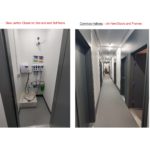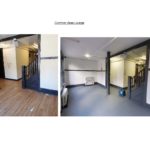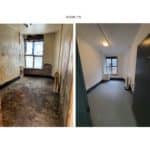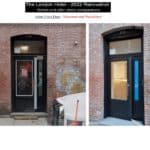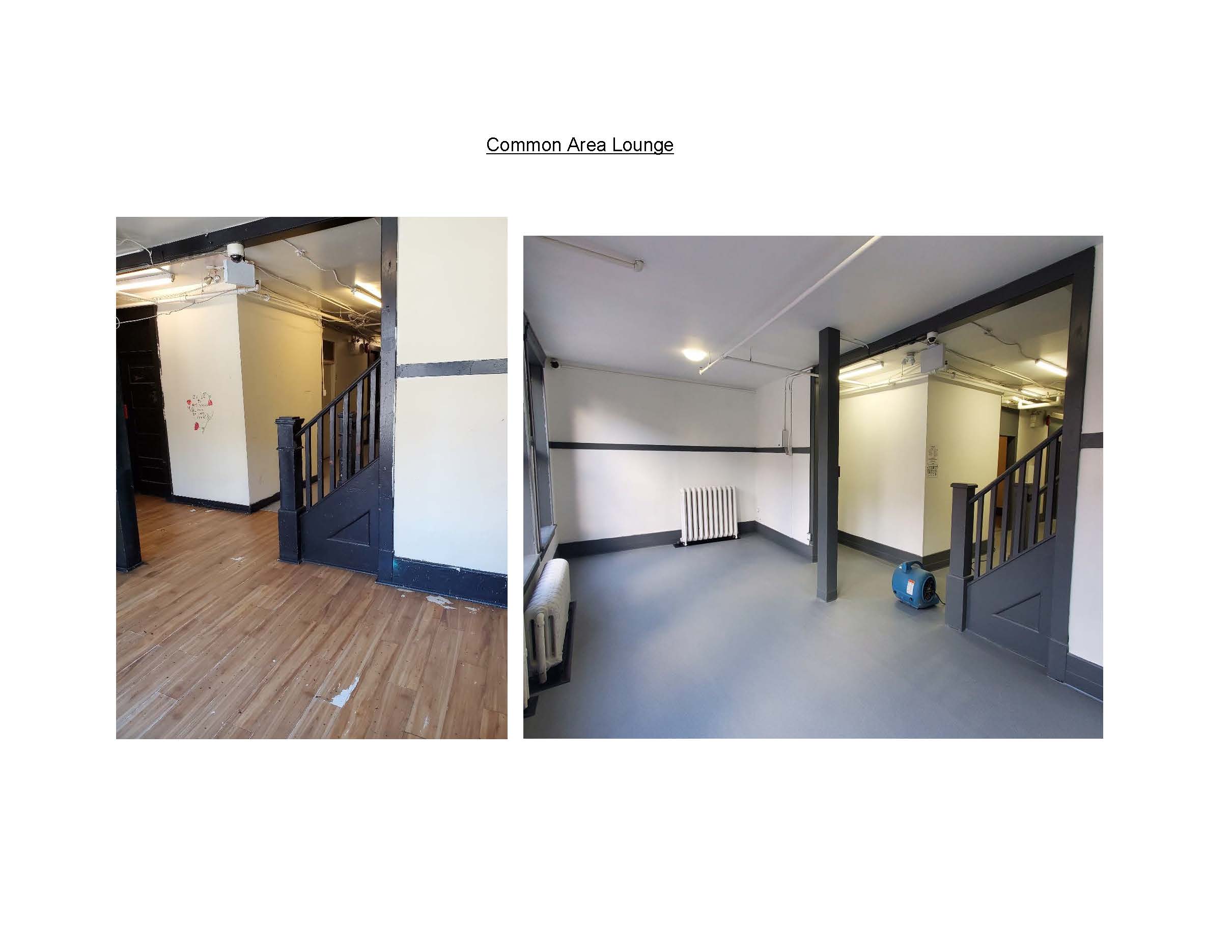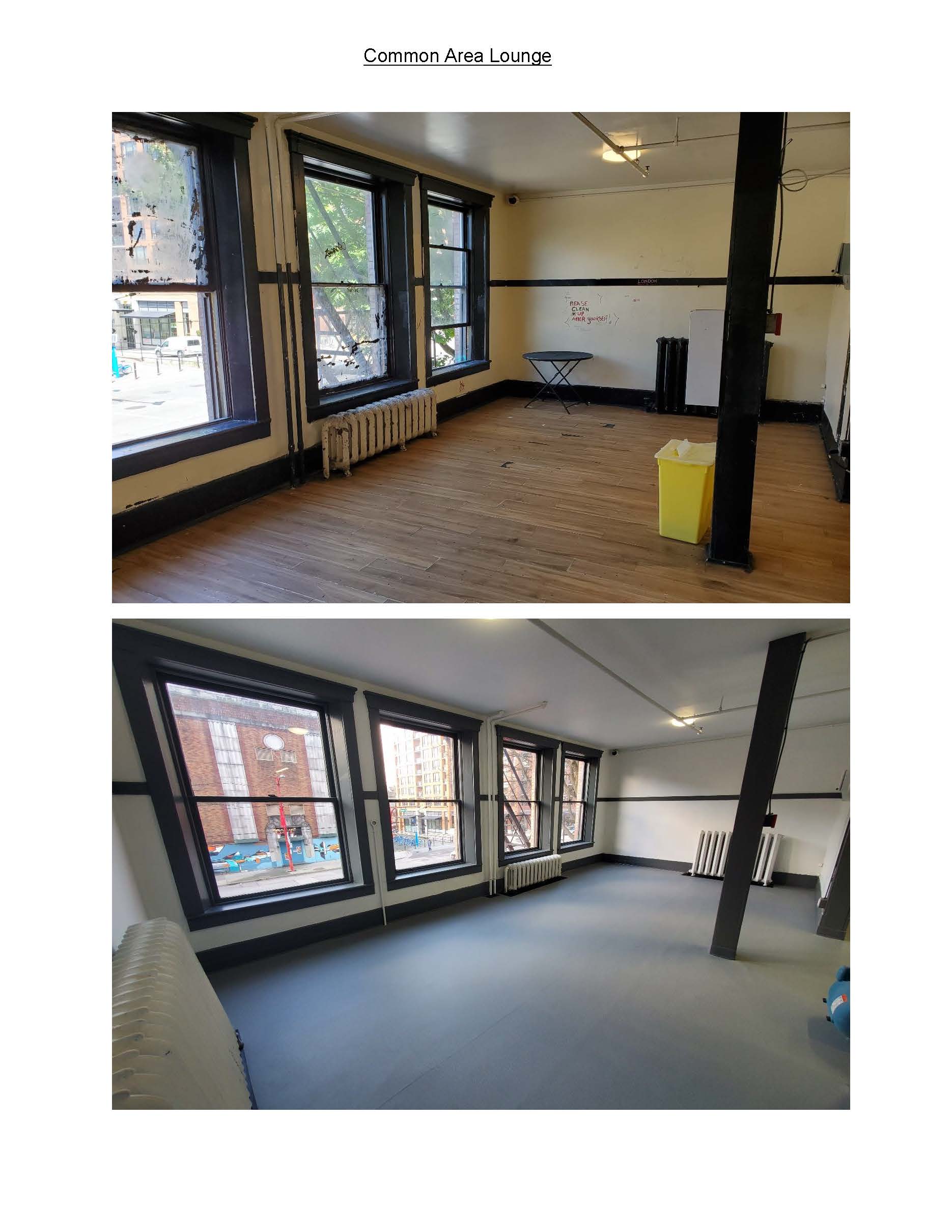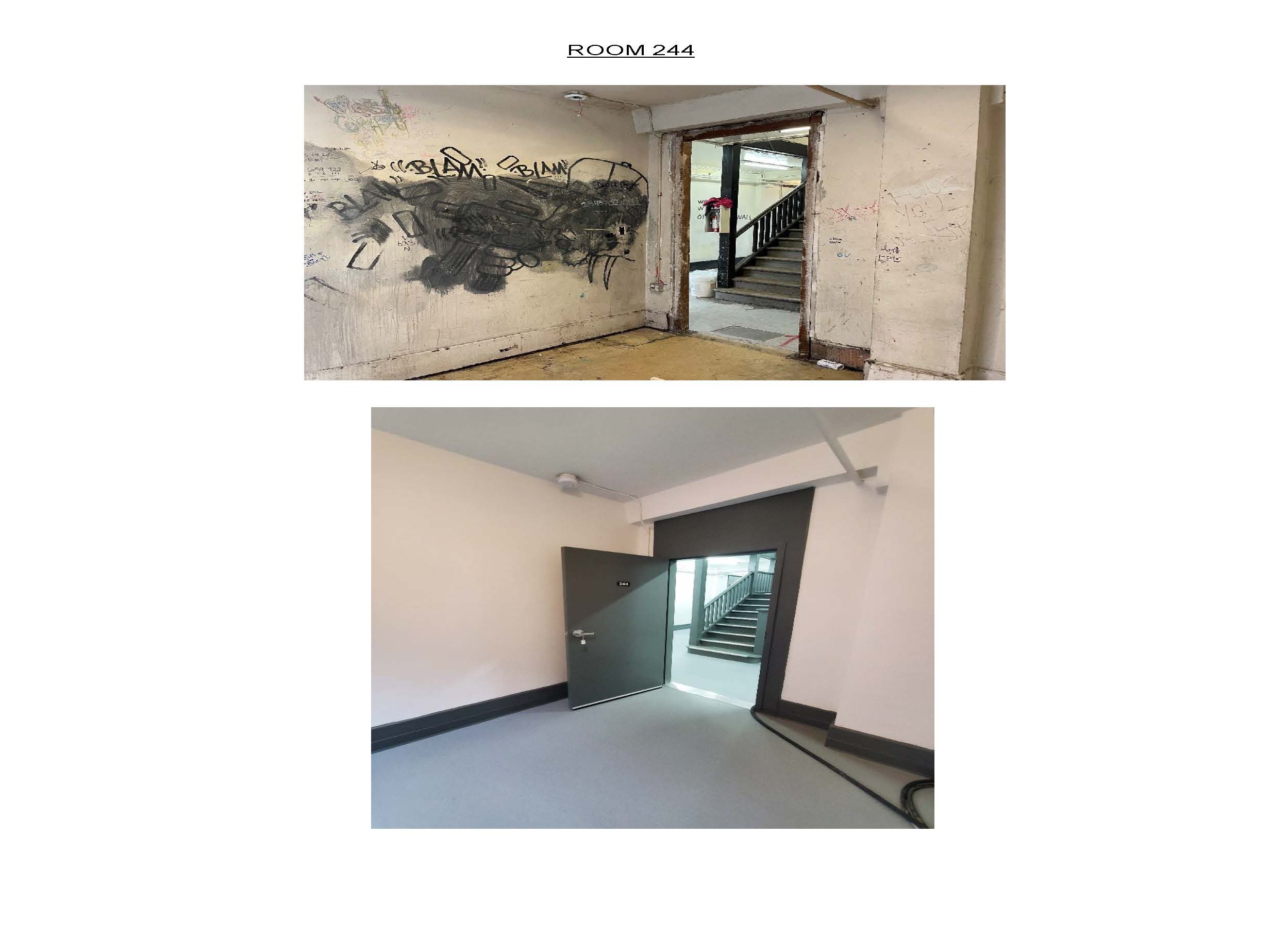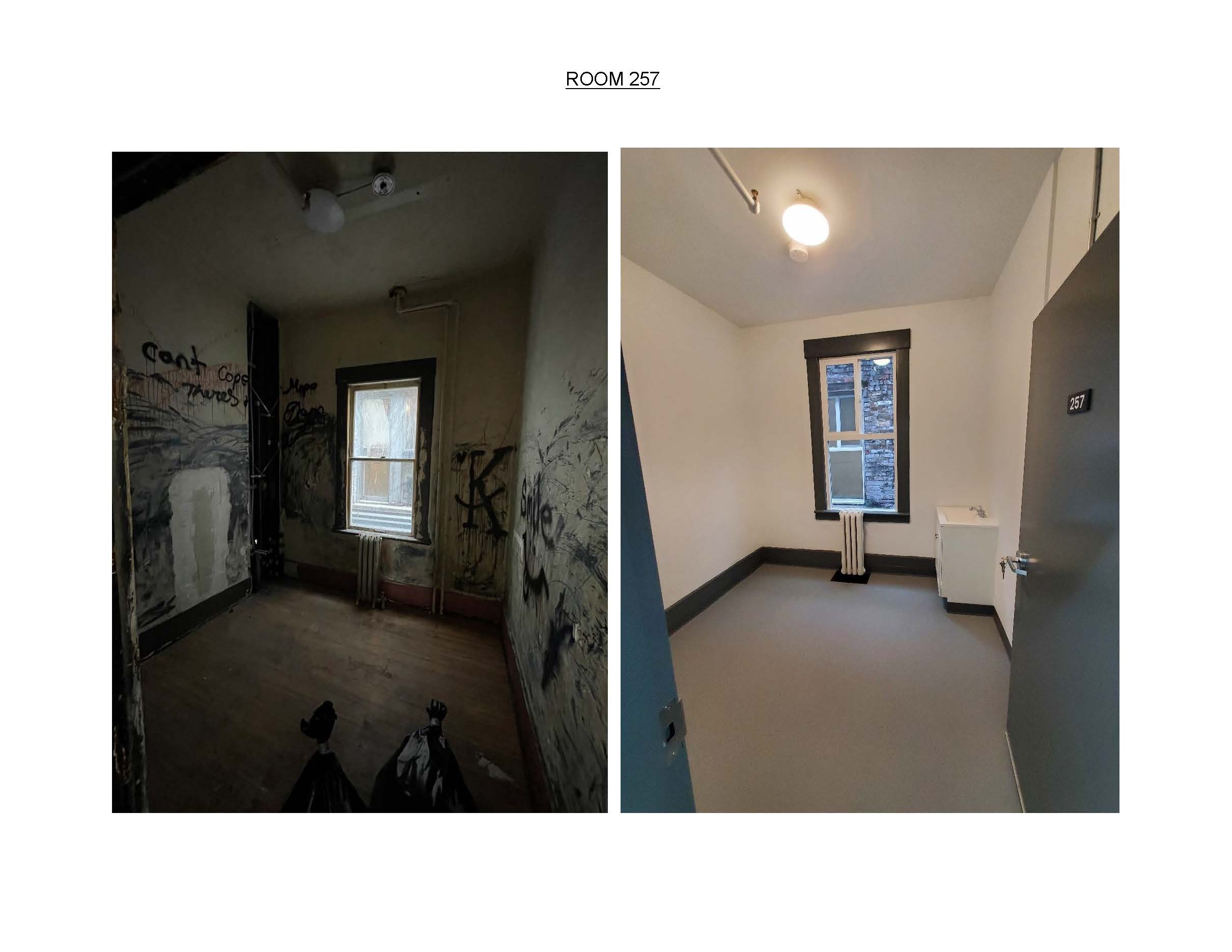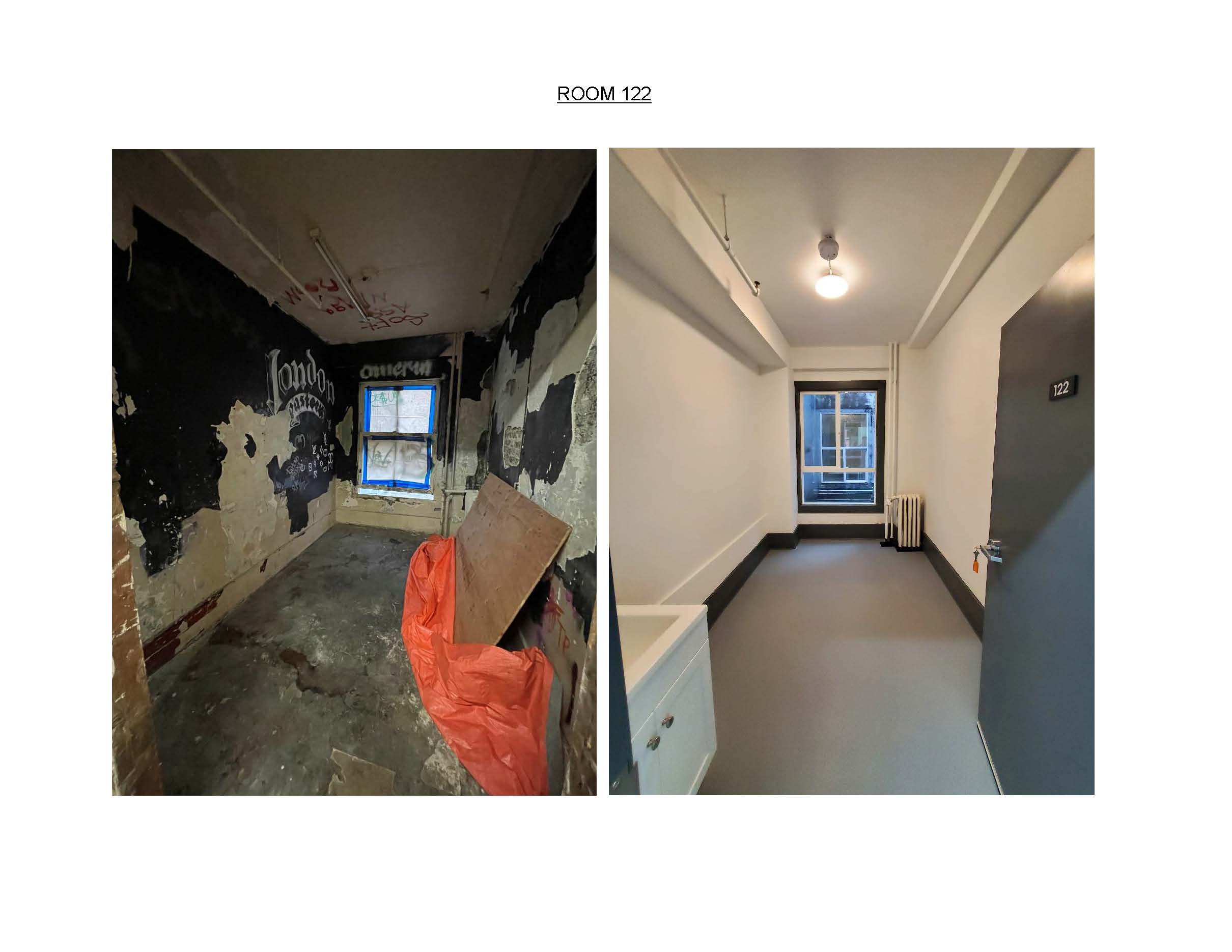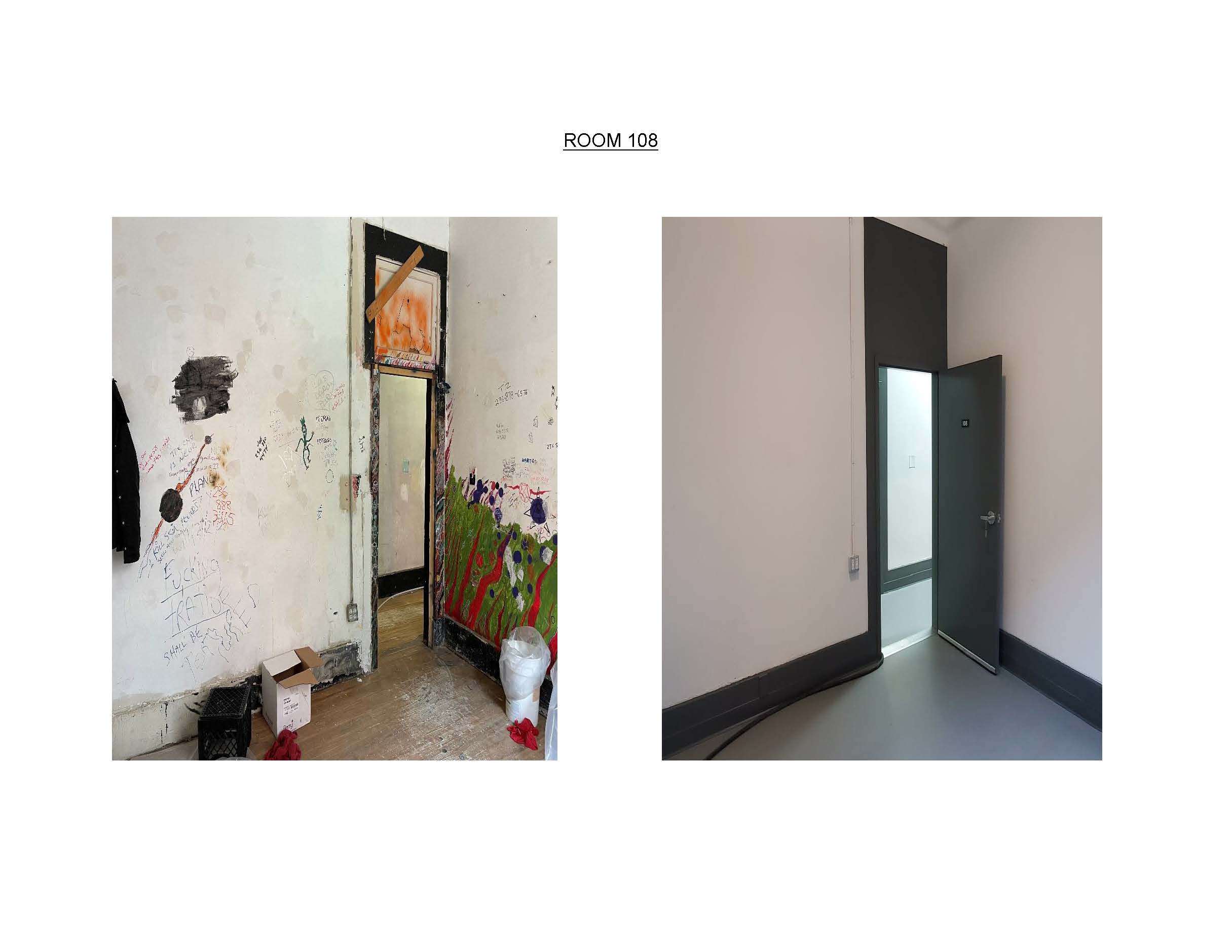The London Hotel Has a New Name and a New Life
The London Hotel is actually three buildings, built between 1903 and 1910, which were functionally connected to form the externally quaint, red brick heritage C building it is now. Because of this, in the residential portion of the building, the bathrooms are small and odd, and in odd places. The light wells, which are dark and problematic in most SROs, are narrow pits. The rooms facing onto them are small and dark and the ones on the lower floors, at the bottom of the light wells, are as tiny as 72 sq. ft. (8’ x 9’) and as dark as a thief’s pocket. Like most heritage buildings and SROs, the inside is uncomfortably hot by the time summer hits, and can be cold in winter. It was a straight dash in the front door and up the stairs into the building, and staff and tenants often had to choose between keeping the door closed for security, or open to allow some small amount of fresh air and breeze into the lobby and office.
Grant Barton was the manager at The London between 2013 and 2019. It was starting to deteriorate then; the renovation that happened in 2009 spruced the place up, but the plumbing and other building infrastructure – the stuff behind the walls – hadn’t been touched since who knows when. The doors and transoms above the doors no longer met code. There were constant leaks and floods. Over time and with the added pressure of an increasingly complex tenant population, the building began to fail. As the building failed, the tenants willing to live at The London presented with ever more challenging behaviours. It also became a tough place to work. Consecutive managers did their very best.
Grant saw potential in The London though. A citizen of the Nisga’a Nation, Grant had a vision of a cleaned up building that provided a healing space for Indigenous men to reconnect to their cultures, communities and families, and to explore reducing and or stopping substance use. Political priorities got in the way.
Then, in 2020, the building owners approached Atira about another renovation, one that would see the plumbing upgraded, old wooden doors replaced with fire-rated doors, the transoms filled in to meet current fire code, and the old windows on the light wells replaced with double-paned, energy efficient windows. The scope of work included reconfiguring the lobby to add more security, and stacking the bathrooms in the back corner of the building, which would have added more and better bathrooms, but lost two sleeping rooms. The renovation also contemplated increasing rents to help pay for the work, and housing a different, more stable (read acceptable) group of tenants; students and minimum/low-wage earners.
The London however is subject to the City of Vancouver’s Single Room Accommodation (SRA) Bylaw and conversion or demolition of any of the designated 73 “sleeping rooms” is subject to a Conversion/Demolition Permit Review, which must go before Council and must include a tenant relocation plan. By 2020, the City could not afford to lose 73 sleeping rooms that rented at maximum shelter allowance ($375/month), no matter how rough they were. City staff latched on to the loss of the two rooms required to improve the bathrooms and insisted that if the rooms were going to be lost, it would require City Council approval. So began almost two years of negotiations, which finally culminated in the City issuing a building permit in the summer of 2022. CMHC, BC Housing and now the City of Vancouver all approved grants to help pay for the renovations, which cost north of $2.5M. The balance is coming from the building owners, Porte Communities. In exchange, Porte will enter into a housing agreement that ensures the rooms will remain available to the low-income community, renting at maximum shelter allowance, for a minimum of 15 years. Thanks to Porte, the renovations are almost complete and just waiting on final inspection and an occupancy permit.
Grant Barton is now the Managing Director of Atira Property Management Inc.’s Supportive Housing portfolio and as Atira gets ready to re-open The London, he is finally able to realize his dream. Renamed Aay̓in, which is a Nisga’a word meaning “to heal,” he will oversee a program that supports Indigenous people to explore reducing and or stopping substance use, and creates space for them to reconnect with each other, their cultures, families and communities. We hope stays will be transitional – up to two years – and that people will be ready to move on to other housing in that time (and that other housing will be available). No one’s permanent housing should be 72 sq. ft at the bottom of a dark light well, no matter how fresh and clean it looks, or how awesome the upgraded plumbing.
Thank you to Porte Communities for sticking through this process. Not everyone in the private market is so inclined. Thank you to City staff who we at times wanted to strangle (metaphorically speaking) and who probably wanted to strangle us, but who stayed with this, always keeping the positive community outcome at the centre. Thank you to CMHC and BC Housing and to the new City Council who last week and after a stumble, unanimously supported the final grant. Thanks especially to Councillor Rebecca Bligh and to Mellisa Morphy, the mayor’s policy advisor, who took the time to tour the building with us and who asked hard questions, and listened with care. And thank you to the managers and staff who gave The London and tenants everything they had, even when it seemed impossible; and to Grant Barton, who had a dream.
“With prior London tenants who are looking for the kind of support being offered at Aay̓in welcomed back, and in the spirit of reconciliation, we will all be in this together,” Grant Barton.
image gallery (before & after)
